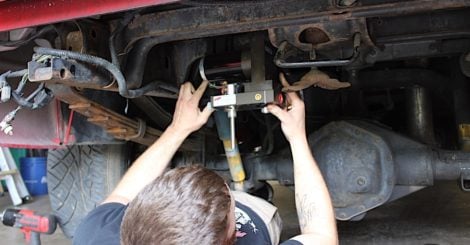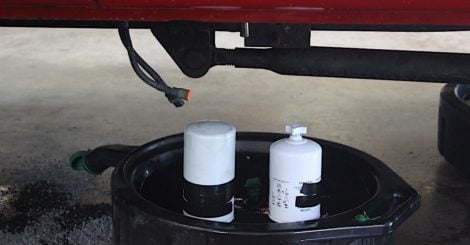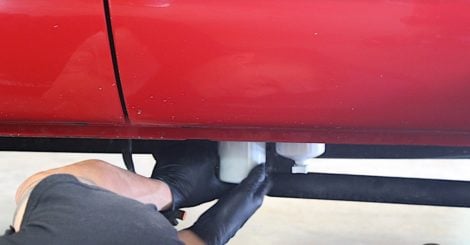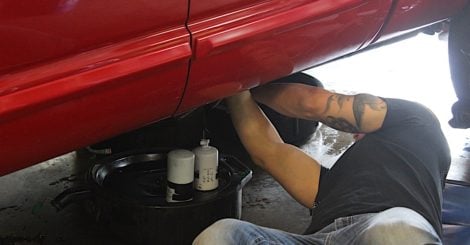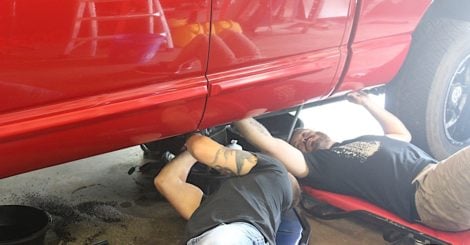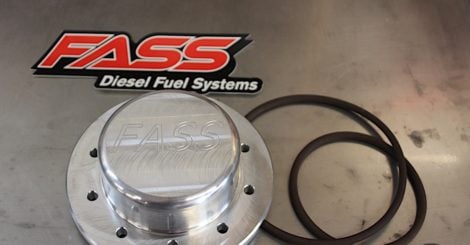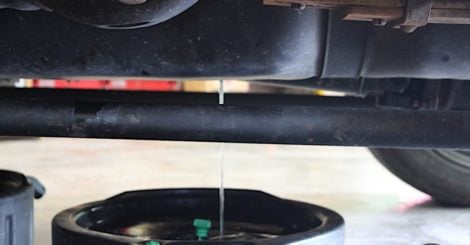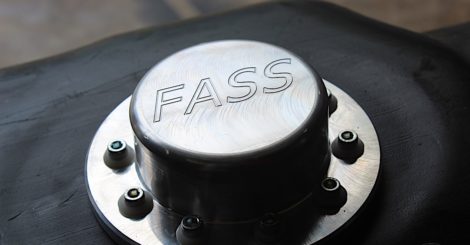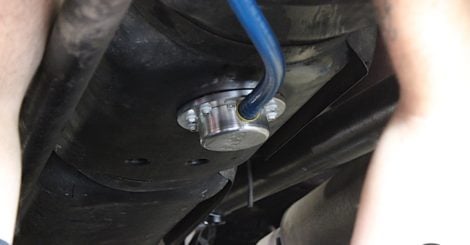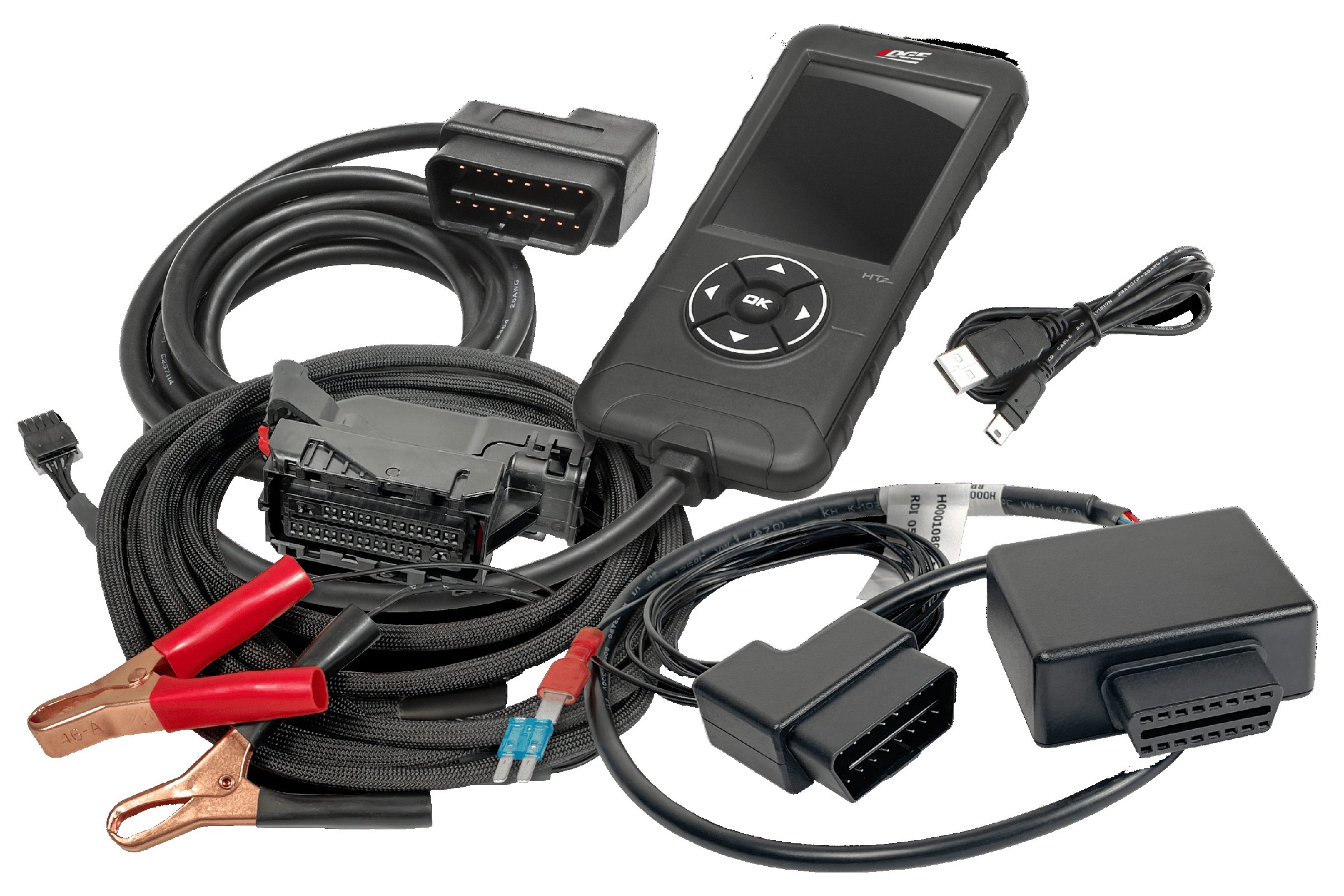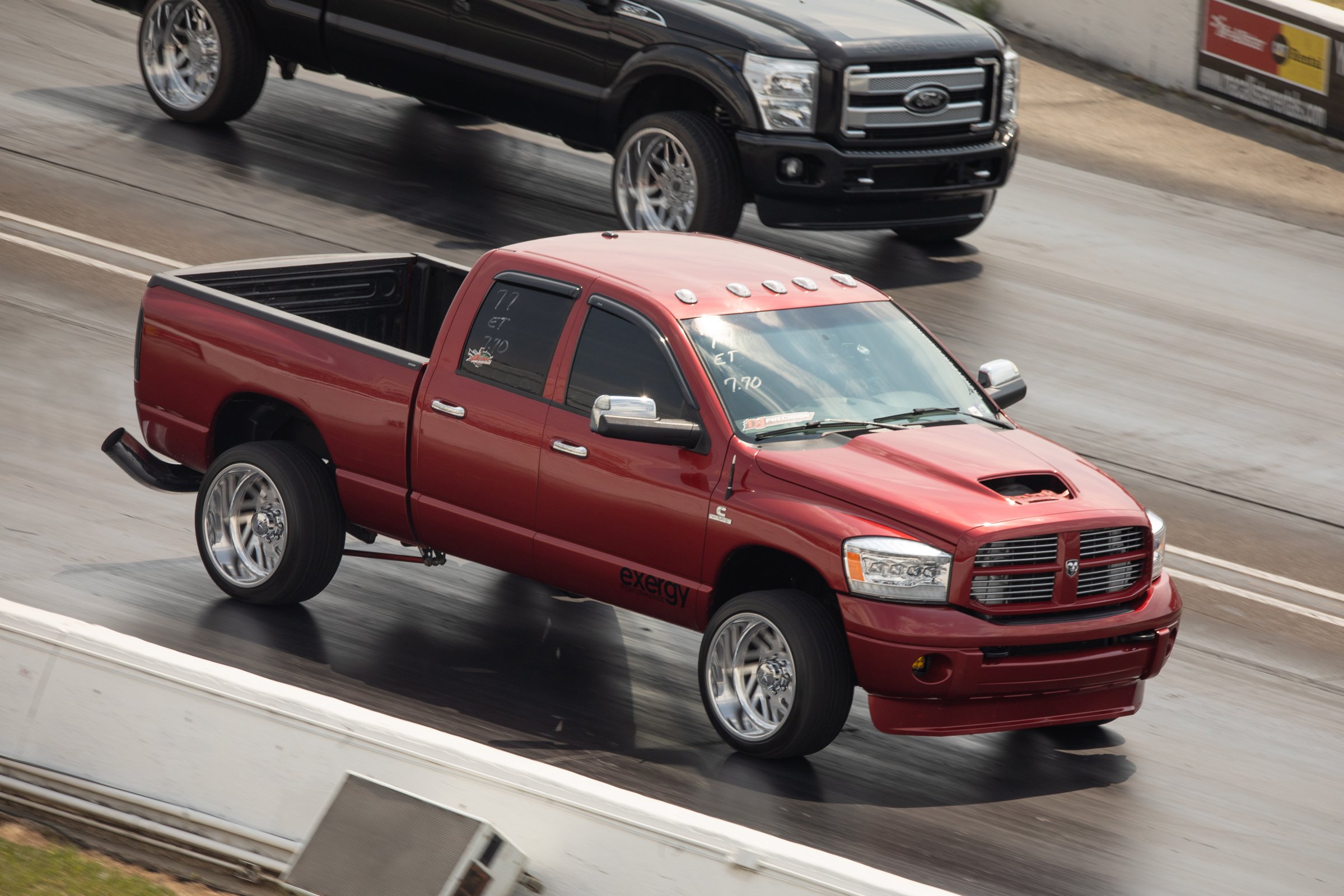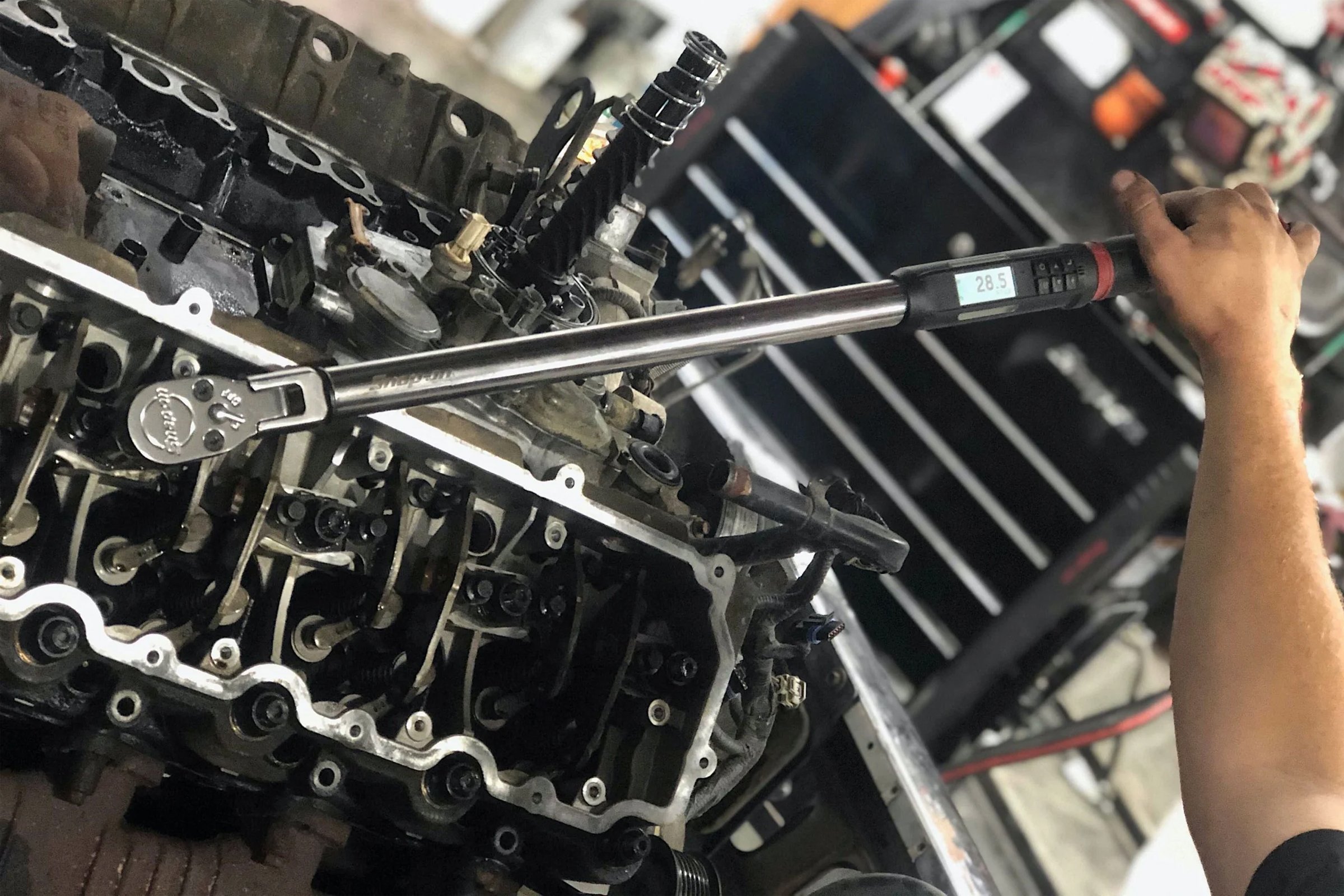One of the major key components to this wild hobby of ours is fuel. Fuel is pumped from the tank to the injection system and then straight into the injectors. To ensure your engine will continue to keep going strong, fuel filtration is something you need to think about.
Luckily, our friends at FASS will help you before it’s too late! The FASS system is designed to take the fuel from the tank and pump it to the engine while simultaneously filtering air, water, and debris from the fuel down to three microns.
Diving Deeper In Fuel Filtration

The layout, showing all parts that come with the purchase of a FASS diesel fuel systems kit. FASS is proud that its products are made right here in the US.
The truck we used for the install is a 2004.5 Ram 3500 race truck. This install was necessary to keep the entire fuel system fed with plenty of fuel. The truck has an Industrial Injection dual CP3 kit and 250- horsepower injectors.
We took a trip to FASS in on our 3500 where we installed the Titanium 220 GPH. The installation process was simple enough that most inexperienced of mechanic could do it.

This install was done on a racing application. Therefore, the mounting area for the FASS was a little different than the usual.
Keep in mind, this install wasn’t in a normal mounting area. For the racing application and the future plans of fuel tank relocation, we situated the FASS to the back of the truck under the bed. This would make for a shorter distance to and from a fuel cell. The kit does not come with enough hose to reach the bed, but it will cover to the back of the cab for mounting in a traditional area.

FASS stands for Fuel Air Separation System and it is a combination of a diesel fuel lift pump and fuel filtration system which is designed to improve your diesel truck’s fuel mileage, engine performance, and extend the life of your diesel injection system.
We got things lined up to fasten the pump to the frame rail.
The FASS Titanium Series pumps are a compact design that packs a big punch. With this pump, you are guaranteed to filter air, water, and debris down to three microns while still being capable of flowing up to 260 gallons per hour. This will better your engine’s idle as well as extend the life of your fuel injection pump and fuel injectors.
The pumps are constructed from 6061 T-6 aircraft quality aluminum and boast such proprietary features as FASS Silencing Technology (FST), Performance Radius Cuts (PRC), and Mass Flow Return (MFR).
FST is a FASS exclusive design that has forged its name as the quietest Fuel Air Separation Systems in the world. PRC, also a FASS exclusive design, allow fuel to flow smoothly and freely to the injectors without any restriction, just like a mandrel bend in an exhaust system. PRC’s eliminate the risk of air being re-introduced into the fuel.
The Mass Flow Return design “polishes” the fuel at the rated GPH of the pump. The MFR removes all types of fuel contaminants (Dirt, Air, Vapor & Water) during each pass through the FASS. Similar pumps on the market only return “some” of the fuel which leaves behind excess air and debris which can cause harm to the injectors.
The FASS team removed the old lift pump that was previously on the truck. This made room for the plumbing of the new upgraded system.
At this time, we would normally cycle the key to get the fuel to the pump, prime it and check for leaks make sure it was ready to rock and roll. Instead, we installed a FASS sump kit in the tank. The sump kit is installed on the bottom of the tank to allow the fuel to be gravity fed versus pulling the fuel out of a draw straw from the top of the tank. The billet sump FASS offers is an impressive piece and gives it more of a race-style appearance.
The FASS sump kit comes with the sump plate that will mount to the tank and sealing rings to make sure it doesn't leak.
Why a sump you ask? We spoke with Spencer Ekstam from FASS during the install. “This designed sump provides an outlet for fuel on the bottom of the tank, eliminating the issues associated with the normal in-tank draw straws or pickup tubes,” Ekstam explained. “If installed correctly at the lowest spot on the tank, it will allow you to run extremely low on fuel, but we don’t recommend it.”
“It is also going to be easier to install when compared to a suction tube at the top of the fuel tank,” Ekstam continued. “Both sumps and suction tubes flow great, but the sump will flow a little better being gravity fed versus, vacuum through a straw.”
The sump kit looks amazing, and we are ecstatic with how it turned out.
The sump was an easy install granted the tank was out, so we didn’t have to work over head. Even then, it is easily doable. We were now ready to run the fuel lines from the Titanium pump to the sump kit.
We recommend this kit for any application if only for the peace of mind knowing you will be maximizing fuel delivery to your fuel system. With everything connected, we heard the pump prime and knew it was good to go.
Everyone at FASS was a massive help with this install and we encourage you to take a look at their products. It’s top-notch quality and user-friendly. We look forward to testing it out on the racetrack.
For more information on FASS’s products check out the website. Do you have a FASS on your truck? Let us know in the comments below!


